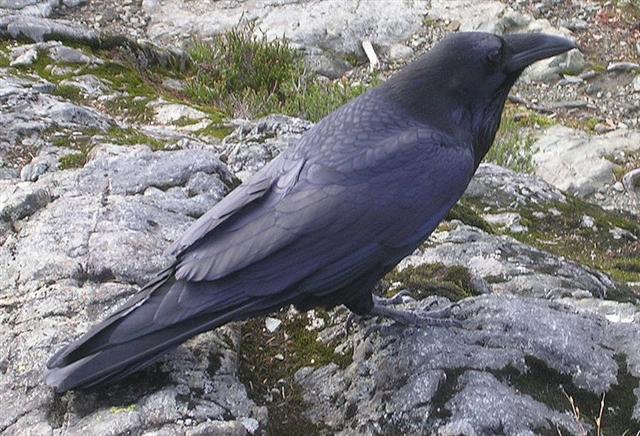Let us
now
investigate
where
Raven
was in
G. In C there were 19 days to the last of the Babylonian ecliptic stations at the Virgin's Girdle (Sa-Sha-Shirū) at Spica:
| ●JULY 7 (188) |
8 |
9 |
10 |
11 |
12 |
| JULY 18 (199) |
19 |
20 |
21 |
22 |
23 |
| no glyph |
 |
 |
 |
 |
 |
| Ca1-1 |
Ca1-2 |
Ca1-3 |
Ca1-4 |
Ca1-5 |
| koia |
ki te hoea |
ki te henua |
te rima te hau tea |
haga i te mea ke |
| Alchita, Ma Wei (183.1), Minkar (183.7), ρ Centauri (183.9) |
Pálida (184.6), Megrez (184.9) |
Hasta-13 / Chariot-28 |
Chang Sha (186.3) |
Intrometida (187.4), Acrux (187.5) |
γ Com. Berenicis (188.0), σ Centauri (188.1), Algorab (188.5), Gacrux (188.7) |
| GIENAH (185.1), ε Muscae (185.2), ζ Crucis (185.4), ZANIAH (185.9) |
| September 20 (263) |
21 |
EQUINOX |
23 |
24 |
25 |
| 'August 24 (236) |
25 |
26 |
27 |
28 |
29 |
| "August 10 (222) |
11 |
12 |
13 |
14 |
15 |
The Tail of the Lion (Zibbat A.) coincided with the beginning of Virgo at the Hind Leg of the Lion (Shēpu-arkū sha) - i.e. at Denebola (β Leonis) respective at Alaraph (β Virginis):


| ●JUNE 29 |
30 |
●JULY 1 |
2 (183) |
3 |
| JULY 10 |
11 |
12 (193) |
13 |
14 |
 |
 |
 |
 |
 |
| Ga5-1 (111) |
Ga5-2 |
Ga5-3 |
Ga5-4 (6 * 19) |
Ga5-5 |
| θ Crateris (175.0), υ Leonis (175.2), ω Virginis (175.3), ι Crateris (175.5) |
ο Hydrae (176.1) |
ζ Crateris, ξ Virginis (177.0), λ Muscae (177.1), ν Virginis (177.2), μ Muscae (177.8) |
Al Sarfah-10 / Uttara Phalguni-12 / Zibbat A.-17 / Shēpu-arkū sha-A-18 |
Phekda, β Hydrae (179.3), η Crateris (179.9) Deneb Cygni
|
| 93 Leonis (178.0), DENEBOLA (178.3), ALARAPH (178.6) |
| September 12 |
13 (256) |
14 |
15 |
16 |
| 'August 16 |
17 (229) |
18 |
19 |
20 |
| "August 2 (214) |
3 |
4 |
5 |
6 |
| ●JULY 4 (185) |
5 |
6 |
7 |
| JULY 15 (196) |
16 |
17 |
18 |
 |
 |
 |
 |
| Ga5-6 |
Ga5-7 |
Ga5-8 (118) |
Ga5-9 |
| no star listed (180) |
π Virginis (181.0), θ Crucis (181.5) |
12h (182.6) |
Alchita, Ma Wei (183.1), Minkar (183.7), ρ Centauri (183.9) |
| ο Virginis (182.1), η Crucis (182.5) |
| September 17 (260) |
18 |
19 |
20 |
| 'August 21 |
22 |
23 |
24 (236) |
| "August 7 |
8 |
9 |
10 (222) |
| Sumerian SAG |
 |
Phoenician resh |
 |
Greek rho |
Ρ (ρ) |
|
... Resh (Arabic: rāۥ) is the twentieth letter of many Semitic alphabets, including Phoenician, Aramaic, Hebrew ... The word resh is usually assumed to have come from a pictogram of a head, ultimately reflecting Proto-Semitic *raۥ(i)š-. The word's East Semitic cognate, rēš-, was one possible phonetic reading of the Sumerian cuneiform sign for 'head' (SAG).

.jpg)
|
| Egyptian house |
 |
Phoenician beth |
 |
Greek beta |
Β (β) |
|
... Like the names of most other Greek letters, the name of beta was adopted from the acrophonic name of the corresponding letter in Phoenician, which was the common Semitic word *bayt ('house').
In the system of Greek numerals beta had a value of 2.
... 'The traditions show that the residences of the king were fairly flexible. The building of new houses was obviously the result of (male) births in the royal family. In each case, the house that was built last is left to the newborn son and his mother, together with a specific servant, while the king has a new and separate residence constructed for himself ...

|

... Then I become aware of ... a presence - a faint, ghostly glimmering, like moonglow, that has appeared on the solstice stone. I don't know how long it lasts, a second or two only I would guess, but while it is there it seems less like a projection - which I know it to be - than something immanent within the stone itself. And it seems to function as a herald for it fades almost as soon as it has appeared and in its place the full effect snaps on - instantaneously. It wasn't there, and then it's there.
As Chris had described, the effect does curiously resemble a poleaxe, or a flag on a pole, and consists of a 'shaft', narrow at the base but widening a little towards the top, running up the left hand side of the solstice stone, surmounted by a right-facing 'head' or 'flag'. An instant later an almond-shaped spot of light, like an eye, appears a few centimeters to the right of the 'flag' and the effect is complete. Weirdly - I do not claim it has any significance - this flag-on-a-pole symbol is the ancient Egyptian hieroglyph neter, meaning 'god', or 'a god' - and not to be understood at all in the Judaeo-Christian usage of that word but rather as a reference to one of the supernatural powers or principles that guide and balance the universe. Manifested here, in this strange Stone Age temple, it glows, as though lit by inner fire.'
Shir (ρ
Leonis)
was at
haka-ua
(Ga4-11), at the
rain-making
4th Son
behind
the
King.
... Naturally sharing the character of its constellation as the Domicilium Solia, in Euphratean astronomy it [Regulus] was Gus-ba-ra, the Flame, or the Red Fire, of the House of the East; in Khorasmia, Achir, Possessing Luminous Rays; and throughout classical days the supposed cause of the summer's heat, a reputation that it shared with the Dog-star ...
And the
Ghost of
Jupiter
(NGC3242
Hydrae)
is a
name
referring
to what
happened
to his
Father,
the King
of
Light:
|
●JUNE
9 |
10 |
11 |
12 (163) |
|
JUNE 20 |
SOLSTICE |
22 (173) |
23 |
 |
 |
 |
 |
|
Ga4-8 |
Ga4-9 (92) |
Ga4-10 |
Ga4-11 |
|
Algieba,
q Carinae (155.5) |
Tania Australis (156.0),
GHOST OF JUPITER
(156.8) |
Extended Net-26b |
Maru-sha-arkat-Sharru-15 |
|
μ HYDRAE
(157.1) |
SHIR
(158.9) |
|
August 23 |
24 (236) |
25 |
26 |
|
'July 27 |
28 |
29 (210) |
30 |
|
"July 13 |
14 |
15 (196) |
16 |

... Midsummer is the flowering season of the oak, which is the tree of endurance and triumph, and like the ash is said to 'court the lightning flash'. Its roots are believed to extend as deep underground as its branches rise in the air - Virgil mentions this - which makes it emblematic of a god whose law runs both in Heaven and in the Underworld ... The month, which takes its name from Juppiter the oak-god, begins on June 10th and ends of July 7th. Midway comes St. John's Day, June 24th, the day on which the oak-king was sacrificially burned alive. The Celtic year was divided into two halves with the second half beginning in July, apparently after a seven-day wake, or funeral feast, in the oak-king's honour ...
Raven arrived in ●JULY 7 (and at the beginning of the text on the Mamari tablet):
| ●JULY 4 (185) |
5 |
6 |
7 |
| JULY 15 (196) |
16 |
17 |
18 |
 |
 |
 |
 |
| Ga5-6 |
Ga5-7 |
Ga5-8 (118) |
Ga5-9 |
| no star listed (180) |
π Virginis (181.0), θ Crucis (181.5) |
12h (182.6) |
Alchita, Ma Wei (183.1), Minkar (183.7), ρ Centauri (183.9) |
| ο Virginis (182.1), η Crucis (182.5) |
| September 17 (260) |
18 |
19 |
20 |
| 'August 21 |
22 |
23 |
24 (236) |
| "August 7 |
8 |
9 |
10 (222) |

|















.jpg)






